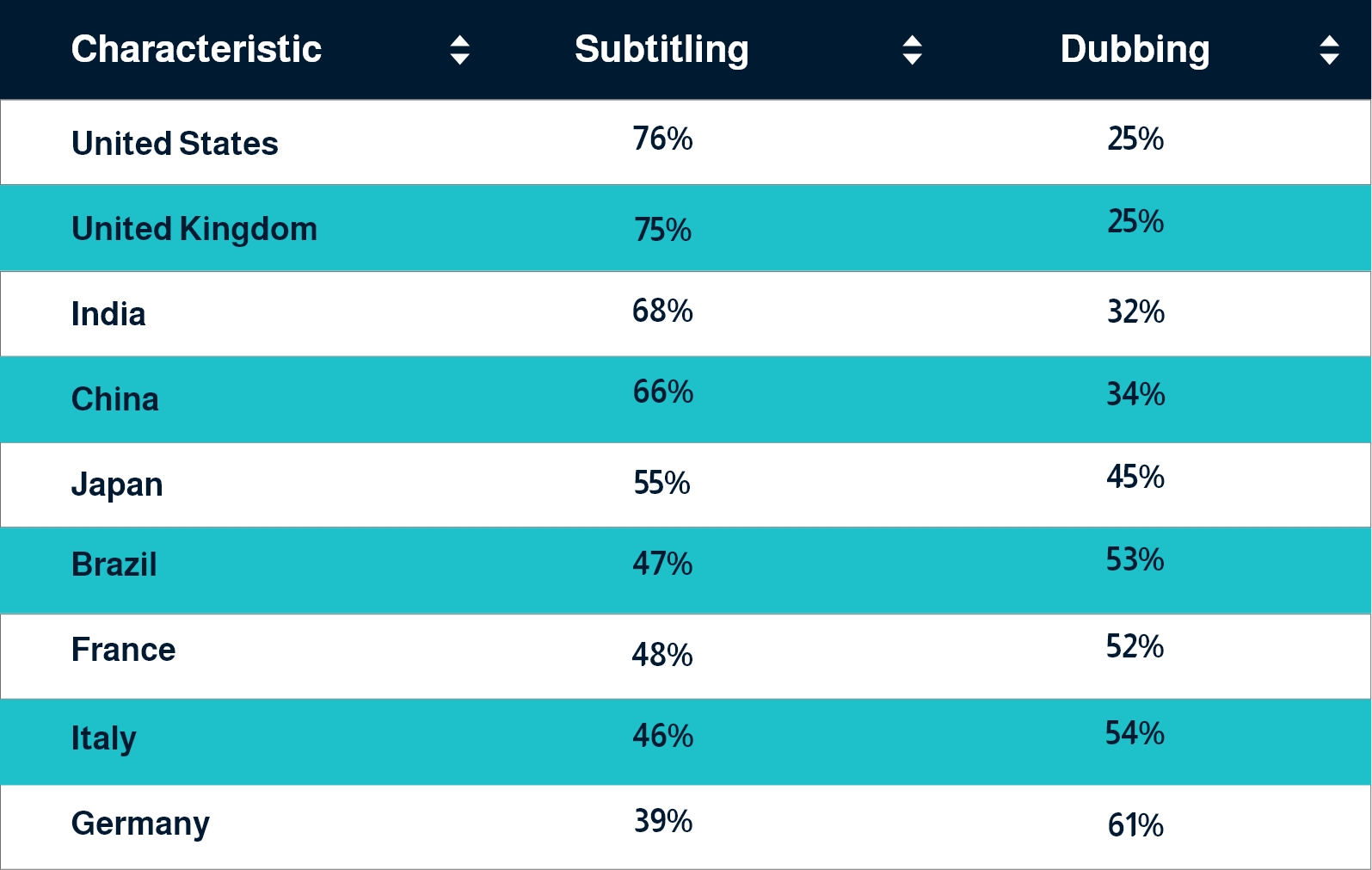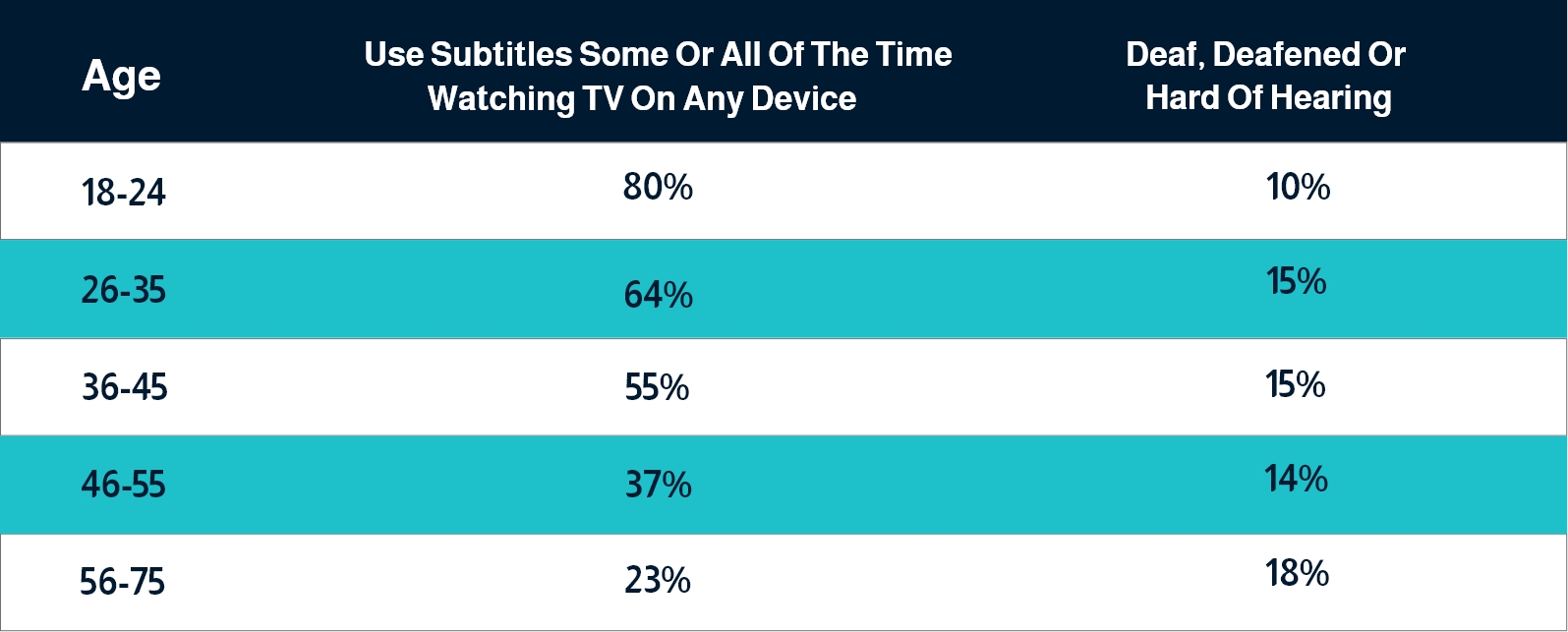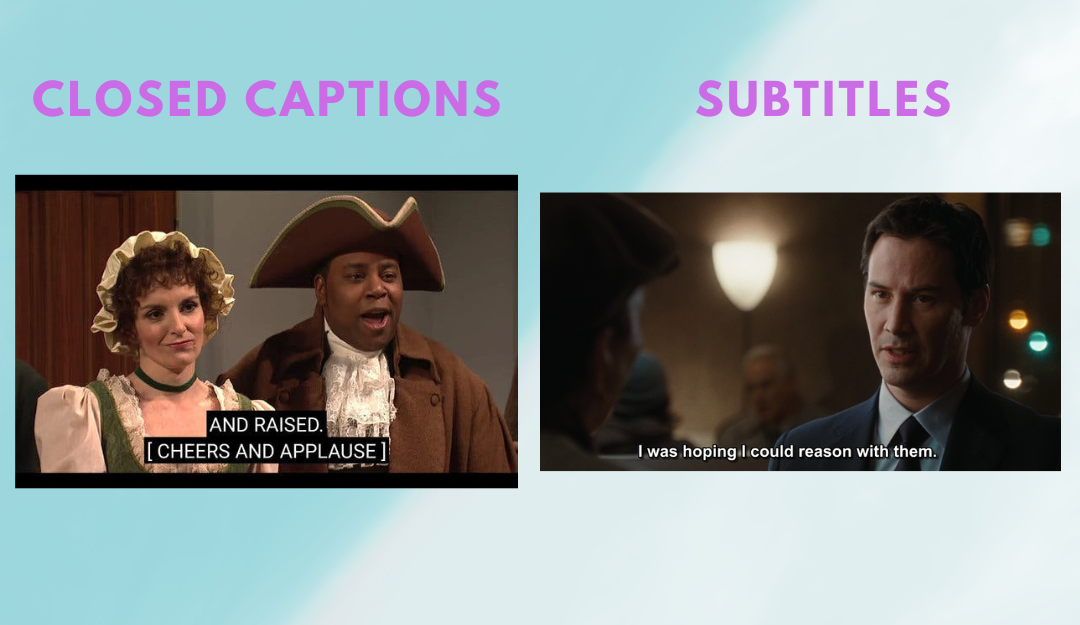Eye-Opening Stats on the Americans’ Obsession with Subtitles
Subtitling has become an integral part of today’s multimedia landscape, without which your video content won’t yield the same engagement and results
Although, in the past, subtitle services were merely used as an accessibility tool for people with hearing impairments or foreign multimedia content, now they’re mainstream and a preference for most Americans.
In this blog post, we capture a vivid picture of the indispensability of subtitles in the modern media landscape. We compile the latest and most compelling statistics that explain the obsession Americans have developed with subtitles.
Clear the Way: New Multimedia Content Has Arrived!
The consumption of multimedia content, particularly videos, has skyrocketed, revolutionizing the way we communicate and engage with information. According to Cisco, in 2022, videos accounted for more than 82% of all internet traffic, up from 73% in 2017.
According to Statista, people worldwide watched 19 hours of online video content per week in 2022. Even platforms like Instagram, which was created as a mainly photo-sharing social media platform, have been favoring video content more and more.
Let’s not go into the TikTok frenzy that has reached new global levels of engagement. And we’re not just talking about social media, as streaming platforms are one of the most popular ways to consume video content.

The reasons behind this popularity are multifaceted, and marketers have indeed been putting more effort and money into creating captivating multimedia content.
As a result, they’ve seen the benefits and want more. Media translation services are playing a pivotal role in satisfying the demand for subtitles, ensuring that videos are accessible and engaging to a wider audience.
Videos hold a remarkable advantage when it comes to online visibility: they are 50 times more likely to appear on the first page of Google search results compared to text pages. Additionally, videos enjoy a 41% higher click-through rate than basic text pages, indicating their effectiveness in captivating the audience’s attention.

In addition, the increase in internet speed, multimedia production, and the availability of high-resolution smart devices created space to produce more complex content.
Public demand, on the other hand, has also pushed this trend. Somehow, there’s a reason why we all need subtitles now!
Interestingly, why we need subtitles differs. People now have to multitask more, and they have more screens than ever before; smart TVs, laptops, smartphones, and even tablets. The habit of engaging with at least two devices or screens at the same time is becoming increasingly common.
In March 2022, Americans spent 10.5 billion hours per month watching video content on CTV, and 6.8 billion hours watching video content on mobile.

The more we explore the world of online videos, the more we see how impactful the use of subtitles and captions has become as well.
A study by Discovery Digital Networks found that YouTube videos with closed captions contributed to an average increase in views of 7.32%. With the prevalence of multitasking, it’s noteworthy that 85% of Facebook videos are watched without sound.
Below we analyze the patterns of why Americans love subtitles, based on demographic differences and more.

Unveiling the American Obsession with Subtitles: Demographic Differences
When compared to other nations, as you can see in the graph below, a higher percentage of Americans prefer to have subtitles available when viewing multimedia content.

Not only that! In a study by Preply, Americans say they prefer subtitles to be there by default rather than adding them. To be precise, 32% of respondents expressed that subtitles should be the default on streaming services and cable TVs, while 26% think they should be the default at movie theaters as well.
Think about where content is being consumed. From public transport to work to walking or driving somewhere, digesting content is something we can now do everywhere.
As a result, to avoid disturbing others while multitasking, people prefer subtitles that are both qualitative and work well with the background visuals of the multimedia content.

The preferences and usage patterns of subtitles vary among different demographic groups within the American population.
Let’s explore how generations, age, and ethnicity play a role in shaping the American obsession with subtitles.
Generations, Age, and Ability
The same Preply survey found that 89% of the respondents indicated that they have used subtitles in the past, highlighting the widespread adoption of this accessibility feature.Among different age groups, the younger generation, Gen Z, emerged as frequent users of subtitles. Approximately 70% of Gen Z respondents reported using subtitles regularly, showcasing their affinity for this feature. While 57% of Americans watch mobile video content in public, for Gen Z, it is more common, with 74% of them doing so most of the time. According to Statista, Gen Z users spend more than 10 hours a week on Tik Tok. While presenting a higher user reach, YouTube ranked second based on time spent, amassing 5.2 hours of weekly engagement. Gen Z is setting trends for themselves, and not only in America. Among 18-25-year-old Brits, 45% said they’d go to shows that had captions on screen, compared to 16% of over-56s.Did you know that now there’s such a thing as Gen Z captions? They’re short phrases that reflect how the new generation is expressing themselves. Have you heard:

Moving forward, subtitles and closed captions are necessary for people with hearing impairments. More and more brands are putting in a lot of effort to guarantee this audience, which is not small in number, has access to their content and engages with their brands.
In a study, the percentage of deaf and hard of hearing people makes up 10–18% of each age group that prefers subtitles, some or all the time.

A Verizon Media and Publicis Media survey showed that 80% of viewers who watch videos with captions are not hard of hearing or deaf. So, while subtitles are a feature to help this group, they’re a minority in using them.
55% of Preply survey participants stated that they find it harder to hear the dialogue in shows and movies compared to the past, indicating a growing reliance on subtitles to enhance comprehension.
Another survey by Sapio Research, got almost the same results, with 67% of the respondents claiming they sometimes find it difficult to hear what is happening when watching video content.
Does Ethnicity Have a Say in Subtitles vs. Dubbing Preferences of Americans?
When considering the role of ethnicity in subtitle preferences, research has uncovered interesting findings.
According to Statista, 57% of American Hispanics are more open to watching foreign movies with English subtitles instead of relying on dubbing. This percentage is significantly higher than that of African American and white respondents.

This preference for subtitles among American Hispanics can be attributed to various factors, such as multilingual households and a desire to maintain the authenticity of the original language.
Moreover, in 2019, the latest census found that 1 in 5 Americans speaks a foreign language at home, which is solid proof of the linguistic diversity within the United States and the potential influence on subtitle preferences.
The growing obsession Americans have with subtitles highlights the importance of multimedia localization in bridging language and cultural barriers in a world that has become increasingly diverse.
Here lies the subtle difference between subtitles vs closed captions. Closed captions show nonverbal messages, including music and sound effects, while subtitles depend on translating the dialogue into another language.

Solid Reasons that Made Subtitles Indispensable for Americans
When it comes to the inclusion of subtitles in multimedia content, Americans have made their preference clear they want subtitles to be there by default.
Subtitles provide a means to engage in multitasking while visually following the discussion without causing disturbance to others.
On the other hand, different sources highlight the significant presence of foreign media and the popularity of non-English productions in the United States. Streaming platforms, especially, have helped make foreign movies coming from all corners of the world a reality.
For instance, international hits like “Squid Game,” “Parasite,” “Money Heist,” “Lupin,” “Narcos,” “Call My Agent!,” “RRR,” and “Dark” have captivated American audiences and increased the need for English subtitles.
The same is true for more shows that include different English accents, like “Game of Thrones,” “Outlander,” “Bridgerton,” “The Crown,” and “Doctor Who.”
Should Businesses Add Subtitles as an Obligation?
A survey by Verizon and Publicis Media found that a significant percentage of viewers, up to 80%, are more likely to complete a video when subtitles are provided. Among those viewers, half preferred captions because they enjoyed watching videos without sound.On mobile devices, on the other hand, a staggering 92% of viewers watch videos with the sound off, which decreases to around 83% across all devices.The same study revealed that subtitles contributed to:
- an 8% increase in ad recall,
- a 10% increase in “ad memory quality,” and
- a 13% increase in brand linkage,
which refers to effectively tying the ad to the brand it represents.
Furthermore, internal tests conducted by Meta demonstrated that captioned video ads increase video view time by an average of 12%.

To sum it up, no statistic shows adding subtitles has a bad ROI or is useless, let alone harmful to your brand. No matter how much subtitling services cost, the benefits will always be higher.
But that brings other responsibilities. Americans, especially Gen Z, won’t fall for Automatic Speech Recognition (ASR), bad fonts, or resolution.
The art of subtitling has evolved significantly, demanding attention to various requirements and offering numerous possibilities depending on the different types of video and audio transcription techniques.
With the ever-expanding range of multimedia content, you should choose business translation services that incorporate high-quality subtitles to meet the preferences of the American audience.
Let The World Understand Your Content With Laoret Subtitle Services
Subtitles have become an integral part of online and television content. They are no longer an afterthought but an essential component that completes the video experience. The evolving entertainment trends, with dim lighting, dark imagery, and background music, emphasize the importance of including closed captions and subtitles to ensure efficient message delivery and avoid distractions. At Laoret, our marketers, copywriters, translators, and graphic designers recognize the significance of creating content that accommodates sound-off situations and incorporates captions, closed captions, and subtitles to enhance visual cues. Laoret’s experts adhere to ISO standards, providing high-quality multilingual subtitles in over 120 languages to provide inclusive, convenient, and seamless viewing experiences.
Tips on How to Effectively
Work Together with Your Post-Editing Team
Check our ultimate guide to Machine
Translation Post-editing to get more details.






